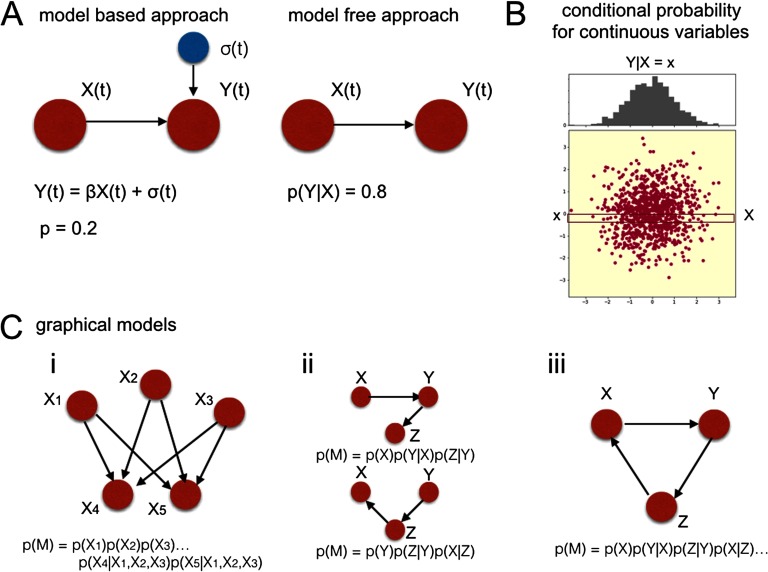Figure 4. .
Bayesian nets. A: Model-based versus model-free approach. β: a regressor coefficient fitted in the modeling procedure. σ(t): additive noise. Both model-based and model-free approach contain a measure of confidence. In a model-based approach, a model is fitted to the data, and p-values associated with this fit are a measure of confidence that the causal link exists (i.e., is a true positive, left panel). In a model-free approach, this confidence is quantified directly by expressing causal relationships in terms of conditional probabilities (right panel). B: Conditional probability for continuous variables. Since BOLD fMRI is a continuous variables, the joint probability distribution for variables X and Y is a two-dimensional distribution. Therefore, conditional probability of P(Y|X = x) becomes a distribution. C: (i) An exemplary Bayesian Net. X1, X2, X3: parents, X4, X5: children. (ii) Competitive Bayesian Nets: one can define competitive models (causal structures) in the network and compare their joint probability derived from the data. (iii) Cyclic belief propagation: if there was a cycle in the network, the expression for the joint probability would convert into an infinite series of conditional probabilities.

